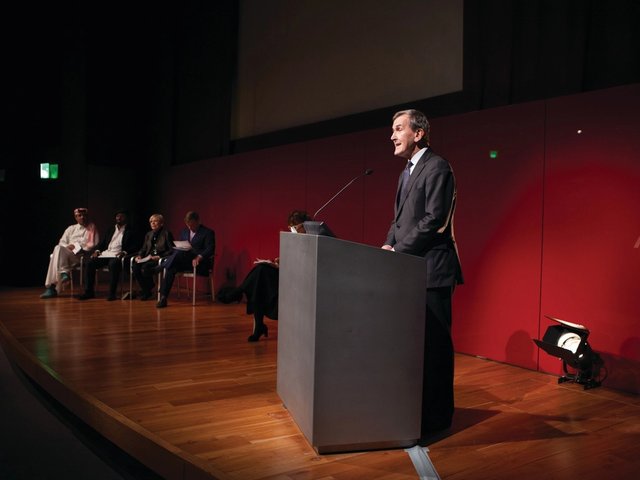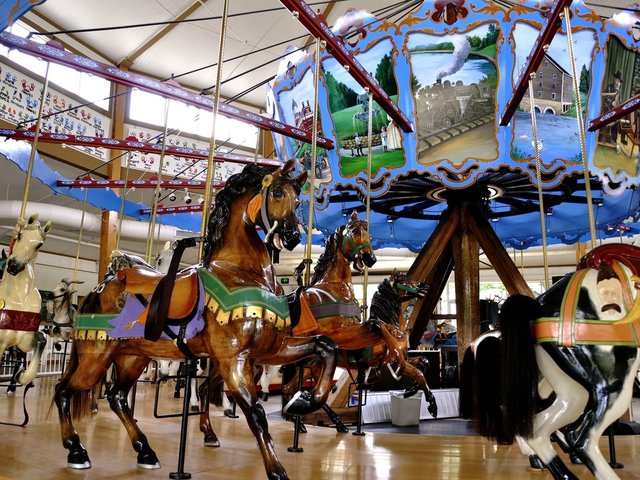The second of The Art Newspaper’s 25th anniversary investigations of what art is for, organised by The Art Newspaper Russia, took place on 15 December in St Petersburg, in Giacomo Quarenghi’s imperial theatre of the 1780s, where the likes of Pavlova, Chaliapin and Rostropovich performed over the years.
It was introduced and summed up by the director of the Hermitage, Mikhail Piotrovsky, who said: “While we have art around us we don’t feel it; it’s like the air we breathe.”
The 250-seat theatre was crammed, with people sitting on the steps and a barrage of journalists and cameramen because the “prosecutor” was Russia’s most famous TV interviewer, Vladimir Posner. He set the scene by quoting Dostoyevsky, who said that art is as necessary as food and drink. “Is this true? If we feed bad food to people, what are the chances they will be healthy? If people have no art or bad art, what chance is there that they will be spiritually healthy? Has art changed in recent times? Should art be understood by the people, as the Marxists wanted?”
His first witness was Irina Prokhorova, the literary critic and publisher. She said that research is proving that the boundary between humans and animals is less and less clear-cut, but the difference is art. Civilisation is not a country’s GDP but the extent to which culture pervades life; in Soviet days, creative people believed this because it kept them alive during terrible times. For her, it was important that art spread among the people: “We have lived too long with the aesthetics of the ugly.” To illustrate how culture can become accessible she cited the Canadian village that held a festival of contemporary poetry. After five years the fishermen could tell the difference between good and bad poetry. Posner: “Did the fisherman give up being good fishermen?” Prokhorova: “They became better fishermen.”
The next witness was Garrett Johnston, an Irish business consultant in Russia, who believes that art is like fitness training for the human consciousness and that, because it is outside the purely utilitarian, it brings people closer to self-fulfilment. In working with entrepreneurs, he said he teaches them that the key to success is finding the unique thing, to think more like artists. He concluded: “Russians are like artists in that they invent answers to questions that haven’t been asked yet. China is all performance; in Russia it’s the other way round”.
The film director Alexei Uchitel chose to concentrate on censorship—how self-censorship is becoming as dangerous as censorship and fear deprives us of talented artistic production. The world is becoming more frightening; he tried to make a movie in Palestine, he said, but the actors were too afraid to come.
The final witness was Tatiana Chernigovskaya, a professor of the science of linguistics. She also took up the question of the borderline between humans and animals, and asked why dogs do not go to museums or concerts. Art is specific to humans, she said. It is all in the head, which is why dogs do not go to the Mariinsky theatre; brains have to be prepared. Art, like science, is our tool to understanding the world; if we want to be like the dogs, we can do without art.
“Art does not imitate reality; it produces reality. Before Turgenev, there were no Turgenev ladies”, she said.
Art has a sensorial capacity; it finds scientific truths before science, as with Impressionism and the science of perception. If the brain is not occupied with difficult tasks, it degenerates. We know that our neural network changes when we really listen to a complex piece of music. “Art is not about the beautiful but a radical new vision,” she concluded. Posner: “Do you agree with Picasso when he said art is a lie that makes us find truth?” Chernigovskaya: “In a madhouse there are people who believe their hallucinations are real, but art is not what you see; it’s what you make others see.”
Neatly paraphrasing an earlier remark, Piotrovsky wound up the proceedings with “Art provides the answers to questions no one has asked” and announced: “Acquittal for all”.



